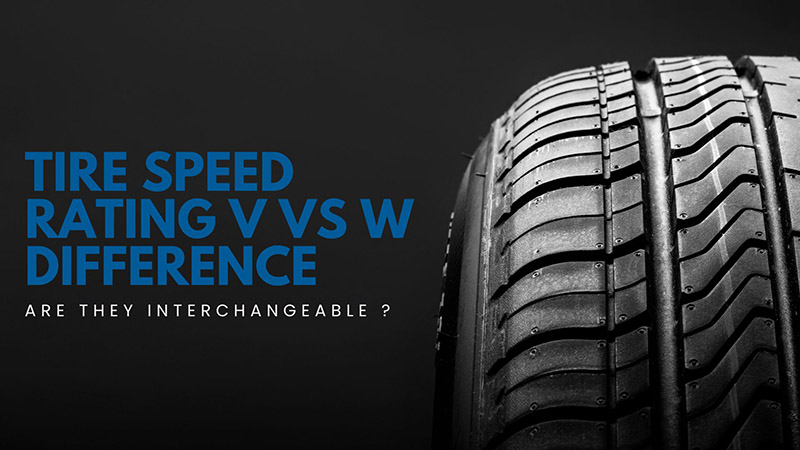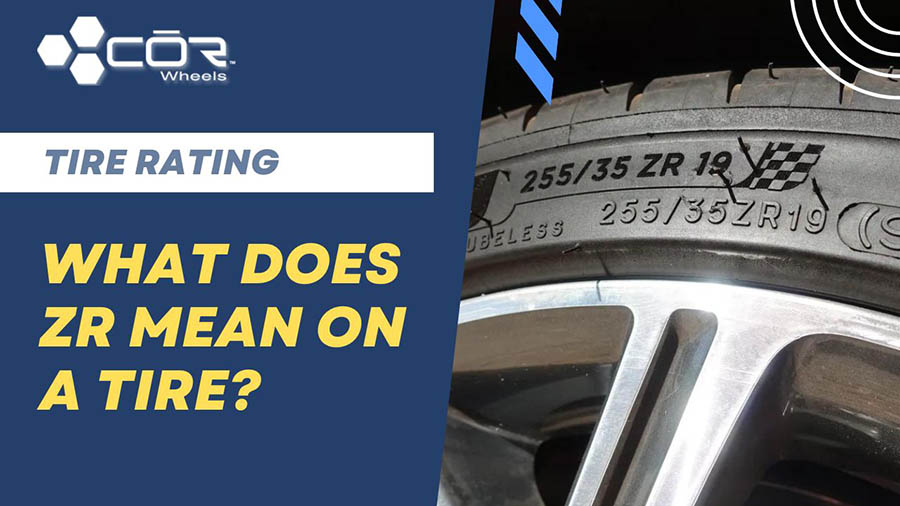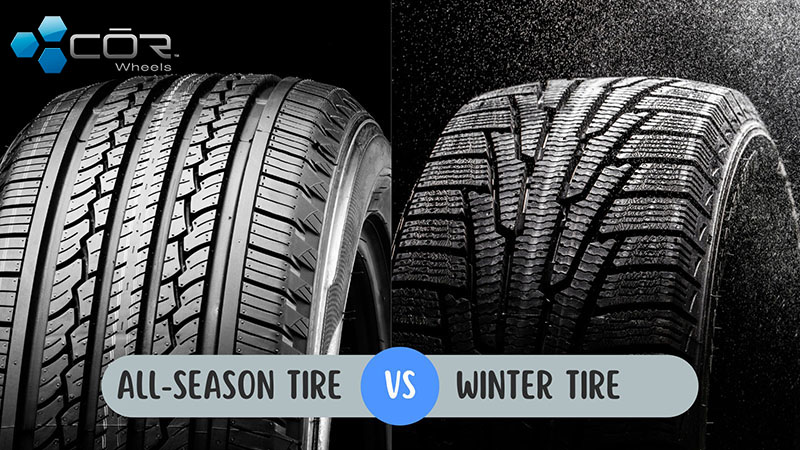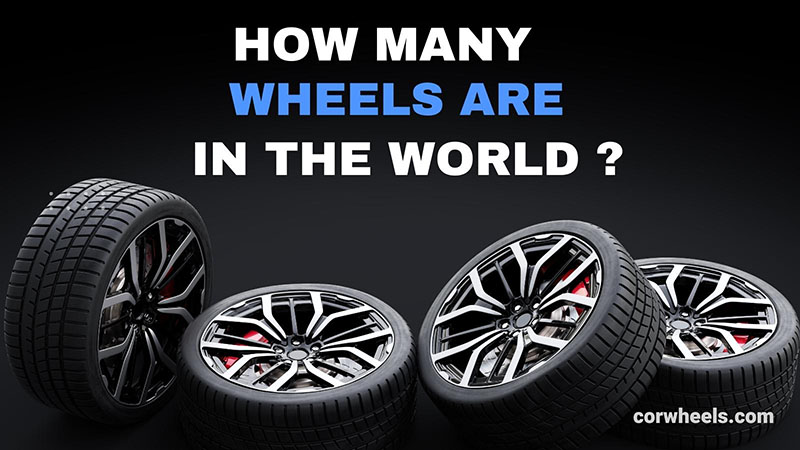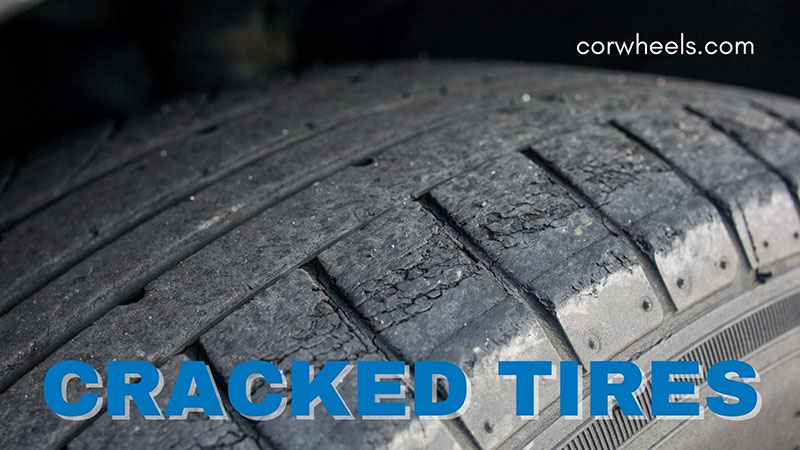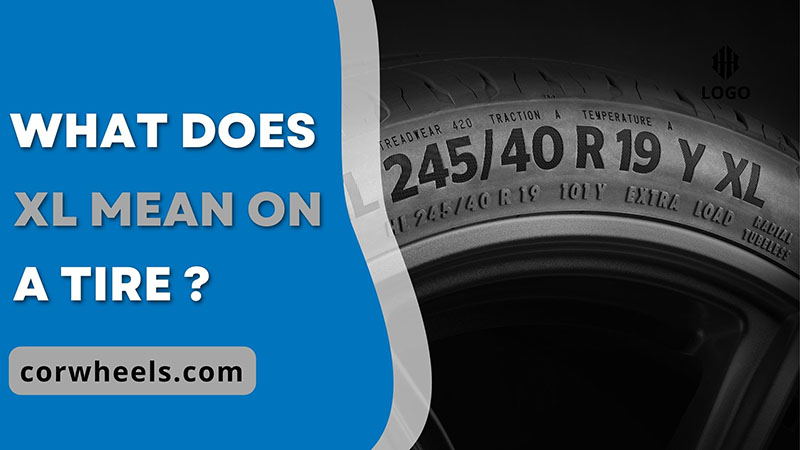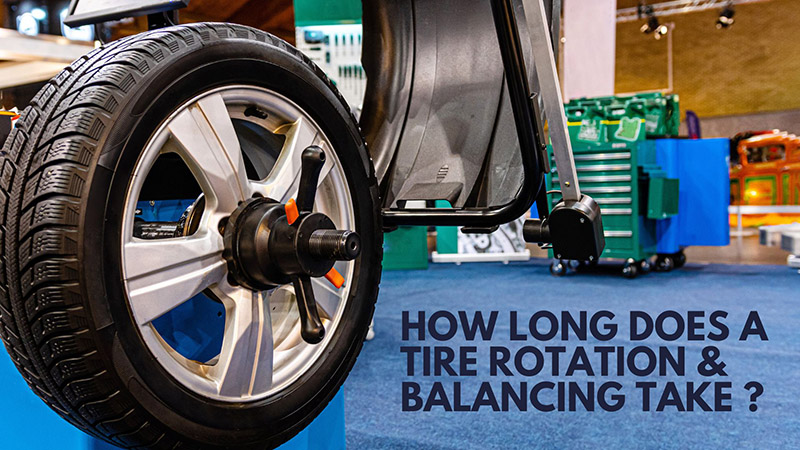When selecting tires for high-performance cars, one of the most important factors to consider is the tire speed rating. V-rated and W-rated tires are both designed for high-speed driving and offer superior handling and responsiveness. However, there are some key differences between tire speed ratings W vs V that may impact your decision.
We’ll take a closer look at the differences between the two rates, including the tire longevity, comfort level, performance, and price. By the end of this post, you will better understand which rating best suits your driving needs and preferences.
In this article:
What Are V And W In Tire Speed Rating Chart?
Tire speed ratings indicate the maximum speed a tire is designed to handle safely. The V and W tire speed codes are both high-performance ratings intended for sports cars and high-speed driving.
V-rated tire models can rev up to 149 miles per hour, while the range for W-rated tires is up to 168 miles per hour.
The difference between the two ratings is due to the increased materials and construction needed to handle the even higher speeds of W-rated tire types.
Other factors such as tire construction, handling, and tread life should also be taken into account when selecting a tire to ensure optimal performance and durability.
Tire Speed Rating V Pros And Cons
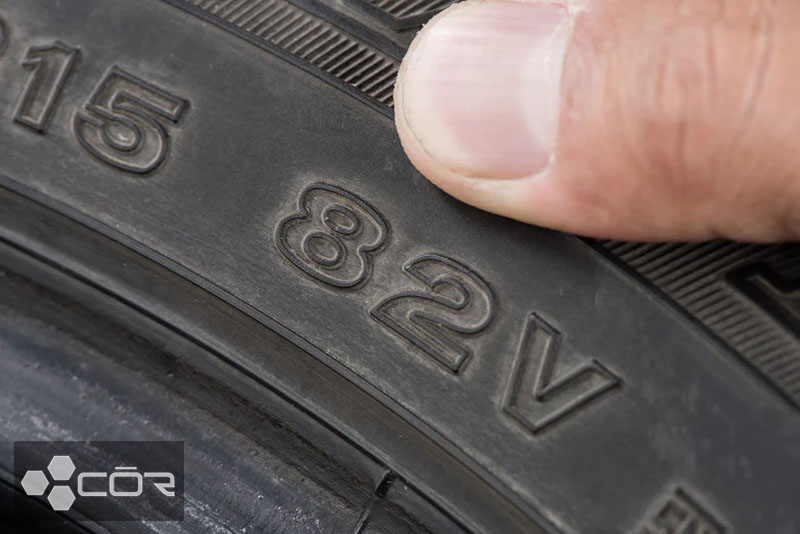
Tire speed rating V is a high-performance rating meant for sports cars and high-speed driving. These tires are constructed with a special blend of softer rubber compounds and materials to provide better grip and stability at high speeds.
Pros
- Can reach speeds up to 149 miles per hour
- More flexible tire sidewalls, resulting in a smoother, more comfortable ride
- Affordable price, suitable for tight budgets
Cons
- Limited aggressive driving handleability
- Shorter lasting time
Tire Speed Rating W Pros And Cons
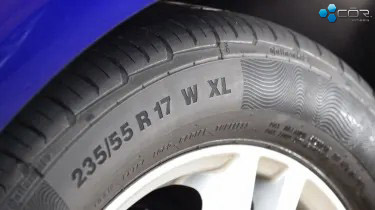
Tire rating W is a high-performance rating designed for sports cars and high-speed driving. W-rated tires allow for speeds of up to 168 miles per hour, which makes them suitable for high-performance cars that require excellent handling and cornering response at extremely high speeds.
Pros
- Designed for high-performance cars
- Offers excellent stability and handling at incredibly great speeds
- Robust construction, resulting in a longer lifespan.
- Constructed with high-performance materials for enhanced grip and traction
Cons
- Expensive
- Stiffer sidewalls, resulting in a harsher ride.
V Vs W Speed Rating: Which One Is Better?
The question of whether V or W speed rating is better ultimately depends on your specific driving needs and preferences. Let’s compare the difference between V and W tires to see which one is more suitable for you!
Lasting Time
The lasting time of a tire depends on several factors, including the quality of the tire, driving habits, and road conditions. Generally, higher speed-rated tires like W tires are built to withstand max speed and, therefore, have a more robust construction.
This typically means that W-rated tires will last longer than V counterparts. However, this isn’t a hard and fast rule, as there are many variables that can affect the lifespan of a tire.
Frequent upkeep, like proper rotation and inflation, helps prolong your tires’ service life and ensure optimal performance and safety on the road.
Comfort Level
Regarding the comfort level of tires with V and W speed ratings, W-rated tires are generally considered to provide a less comfortable ride than V ones. The stiffer sidewalls of W-rated tires can also result in more road noise and harshness, further impacting comfort levels.
In contrast, V-rated type of tires are often built with softer sidewalls and more comfort-oriented rubber compounds. This helps absorb road vibrations and provide a smoother ride, suitable for those looking for a more comfortable driving experience.
Performance
Performance-wise, V and W tires have some key differences. V-rated tires provide decent performance for vehicles requiring excellent handling and high-speed stability. We found our 235/45R18 94V tires shine best on wet and dry roads, with a focus on delivering precise maneuvering and responsive steering.
On the flip side, W-rated tires are geared towards even faster speeds and more extreme performance needs. These tires often have even more aggressive tread patterns and are made with advanced rubber compounds that provide exceptional grip and handling even at speeds up to 168 mph.
We put a W tire set on our 2012 Ford F150 pickup truck, which usually burns rubber on highways and loads heavy cargo (or towing a trailer sometimes). The handling feel smooth and responsive; we can hear the roaming sound clearly on the freeway. But unfortunately, these tires wear out faster than our other V tires.
Price
Price is always a crucial factor when buying new tires. On average, you can expect to pay anywhere from $100 to $300 or more for a single V-rated tire, with some high-end performance tires costing even more. Meanwhile, the price of a tire W rating is $150 to $400.
As you can see, V-rated tires are generally less expensive than their counterparts. This is because V-rated tires are designed to handle lower speeds and, therefore, don’t need the same level of construction as W-rated tires. If you’re on a tight budget, V tires may be the better choice.
Verdict
In conclusion, the better tire speed rating between V and W depends on your specific needs and priorities. If you’re looking for a more comfortable ride and don’t need high-performance capabilities, the former is a great choice. If you want the best possible performance and don’t mind spending more, the latter is the better option.
Can I Use W Rated Tires Instead Of V?
Not recommended. While it is technically possible to swap W tires for V tires, it is generally not recommended unless your vehicle manufacturer explicitly permits it.
One potential issue with using W-rated instead of V-rated tires is that the former ones may have a stiffer sidewall and could be less comfortable to ride on. Additionally, installing W tires may cause the speed limiter or governor in your car, which is set to the V-rated tire’s maximum speed, to malfunction, creating dangerous driving circumstances.
Another issue is that switching the two may influence the handling and stability of the vehicle. Because W models often have a bigger contact patch, they could have slower steering reactions and less maneuverability. This could be a particular difficulty if your car is built for high-performance driving, like a sports car or a performance sedan.
Frequently Asked Questions
Is V Or W Higher Speed Rating?
The W tire speed rating is higher than the V tire. In the tire speed rating system, the letter code corresponds to the maximum speed at which the tire can safely operate for an extended period. W-rated tires are designed to handle speeds up to 168 miles per hour, while V-rated tires can manage rates up to 149 miles per hour.
Can I Mix V And W Rated Tyres?
No. It is not recommended to mix V and W-rated tires on a vehicle. This is because different tires can have different maneuvering and performance characteristics, affecting the overall safety of the automobile. Also, tires with different speed ratings can wear at different rates, causing uneven wear and potentially compromising tire safety over time.
Which Speed Rating Tyre Is Best?
The best speed rating for a tire depends on a driver’s individual needs and daily driving habits. A W-rated tire may be the best choice for drivers prioritizing high-speed handling and performance.
However, for drivers who do not typically drive at such high speeds, a lower speed rating like V or H may be more appropriate.
Does The V Matter On Tires?
Yes. The V rating on tires matters as it indicates the maximum safe speed at which the tire can operate. A tire with a V rating is designed to be safe for use at speeds up to 149 mph.
This rating is commonly used for high-performance vehicles such as exotic sports cars, high-performance sedans, and some luxury automobiles.
The Bottom Line
The decision between tire speed rating V vs W all boils down to personal preference and driving style. V-rated tires are a great choice for high-performance transportation means demanding excellent handling and responsiveness at high speeds. In contrast, W ones are ideal for sports cars that require the highest levels of performance and stability.
Ultimately, the key is to choose a tire that provides the best balance of performance, durability, and safety for your specific driving needs and preferences. Be sure to consult a trusted tire professional if you have any questions or concerns about selecting the right tire for your car.
See more: tire speed rating H vs V

